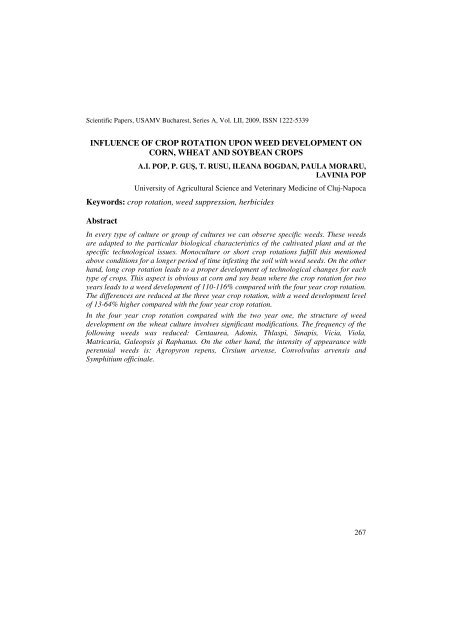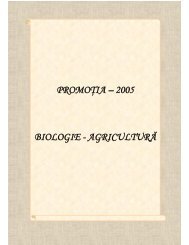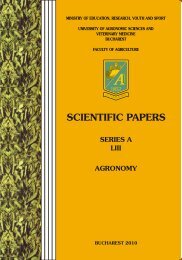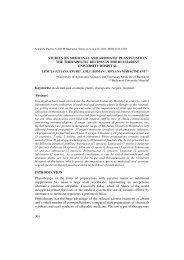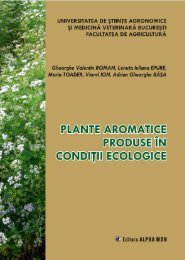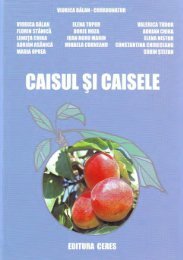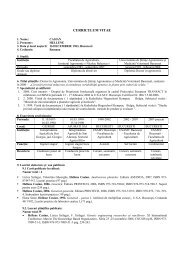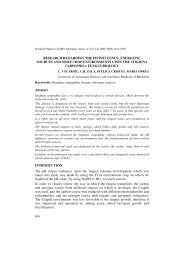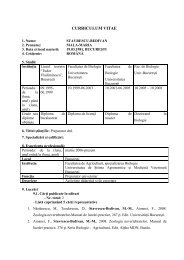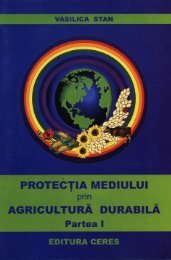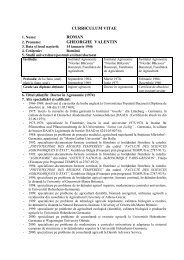SCIENTIFIC PAPERS
SCIENTIFIC PAPERS
SCIENTIFIC PAPERS
You also want an ePaper? Increase the reach of your titles
YUMPU automatically turns print PDFs into web optimized ePapers that Google loves.
Scientific Papers, USAMV Bucharest, Series A, Vol. LII, 2009, ISSN 1222-5339INFLUENCE OF CROP ROTATION UPON WEED DEVELOPMENT ONCORN, WHEAT AND SOYBEAN CROPSA.I. POP, P. GUŞ, T. RUSU, ILEANA BOGDAN, PAULA MORARU,LAVINIA POPUniversity of Agricultural Science and Veterinary Medicine of Cluj-NapocaKeywords: crop rotation, weed suppression, herbicidesAbstractIn every type of culture or group of cultures we can observe specific weeds. These weedsare adapted to the particular biological characteristics of the cultivated plant and at thespecific technological issues. Monoculture or short crop rotations fulfill this mentionedabove conditions for a longer period of time infesting the soil with weed seeds. On the otherhand, long crop rotation leads to a proper development of technological changes for eachtype of crops. This aspect is obvious at corn and soy bean where the crop rotation for twoyears leads to a weed development of 110-116% compared with the four year crop rotation.The differences are reduced at the three year crop rotation, with a weed development levelof 13-64% higher compared with the four year crop rotation.In the four year crop rotation compared with the two year one, the structure of weeddevelopment on the wheat culture involves significant modifications. The frequency of thefollowing weeds was reduced: Centaurea, Adonis, Thlaspi, Sinapis, Vicia, Viola,Matricaria, Galeopsis şi Raphanus. On the other hand, the intensity of appearance withperennial weeds is: Agropyron repens, Cirsium arvense, Convolvulus arvensis andSymphitium officinale.267


